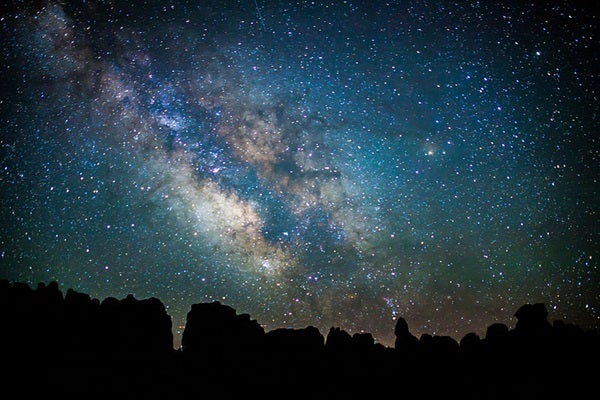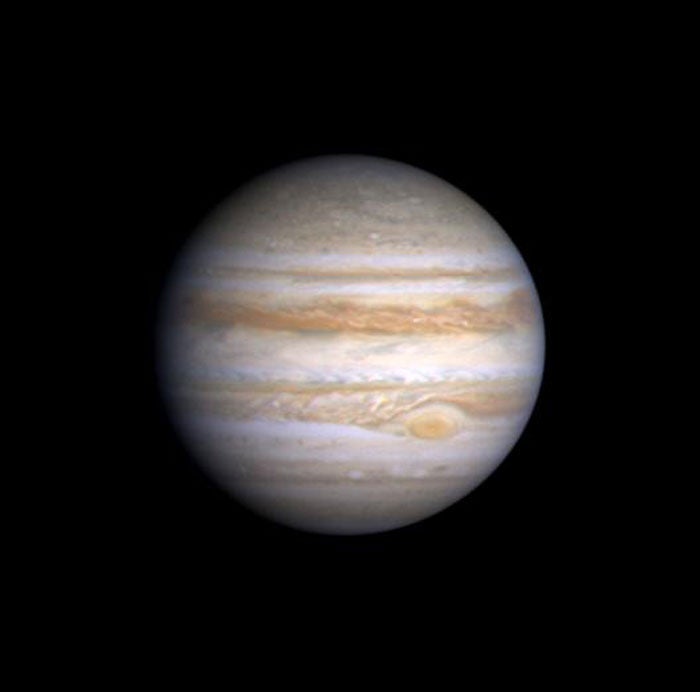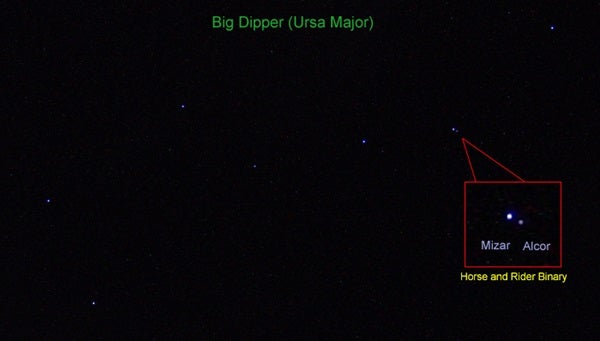Brilliant Venus appears low in evening twilight all week. Look for the blazing point of light about 10° above the western horizon starting 30 minutes after sunset. The planet shines at magnitude –3.9 and is by far the brightest object in the night sky after the Moon. If you target the planet through binoculars this evening, you’ll likely receive a bonus with your final sighting of Mercury during its current apparition. The innermost planet lies 6° (about one binocular field) to Venus’ lower right. Mercury glows at 2nd magnitude and just barely shines through the bright twilight.
Saturday, March 24
First Quarter Moon arrives at 11:35 a.m. EDT. Although our satellite rises around noon local daylight time, it becomes much more prominent as darkness falls. It then lies due south and some 70° above the horizon. The Moon spends the night at the feet of Gemini the Twins, above the more familiar shape of Orion the Hunter, and sets around 3 a.m. local daylight time.
Sunday, March 25
Head outside during the morning hours and you can’t miss Jupiter. The giant planet rises shortly after 11 p.m. local daylight time and climbs highest in the south around 4 a.m. Jupiter shines at magnitude –2.3, which makes it the brightest point of light in the predawn sky, and resides among the much dimmer stars of the constellation Libra. A telescope reveals the planet’s 42″-diameter disk and four bright moons. This morning, all four satellites line up west of the gas giant.
Saturn rises a little before 3 a.m. local daylight time and climbs some 20° high in the southeast by 5 a.m. The ringed planet shines at magnitude 0.5 and lies in northern Sagittarius the Archer, some 4° east of similarly bright Mars. When viewed through a telescope, Saturn shows a 17″-diameter disk surrounded by a stunning ring system that spans 37″ and tilts 26° to our line of sight.
The Moon reaches perigee, the closest point in its orbit around Earth, at 1:17 p.m. EDT. It then lies 229,352 miles (369,106 kilometers) away from us.
Tuesday, March 27
Orion the Hunter stands out in the southwest as darkness falls this week. The conspicuous constellation appears slightly askew compared with its appearance in winter’s evening sky. Now, the three-star belt is aligned parallel to the horizon while blue-white Rigel hangs directly below the belt and ruddy Betelgeuse stands directly above.
Wednesday, March 28
Mars rises a bit before 3 a.m. local daylight time and appears about 20° high in the southeast by 5 a.m. The magnitude 0.3 Red Planet lies against the backdrop of northern Sagittarius. Its eastward motion relative to the background stars carries it to a position 3° west-southwest of Saturn this morning, while the 7th-magnitude globular star cluster M28 lies 1.3° south of Mars. As the Red Planet’s eastward sojourn continues, it will pass within 1.5° of Saturn in early April. When viewed through a telescope this morning, Mars shows an 8″-diameter disk and a few subtle surface details.
Venus has a close conjunction with Uranus this evening. From North America, the two planets lie a mere 4′ apart — less than 15 percent the diameter of the Full Moon. This is the closest the two worlds have been since the same date in 2003. Uranus glows at 6th magnitude, however, and will be a challenge to see in twilight. Track Venus through binoculars as the sky darkens and watch for the more distant planet to pop into view.
Thursday, March 29
Although the dwarf planet Ceres reached opposition and peak visibility in late January, it remains a fine sight. It currently shines at magnitude 7.9 and is an easy object to spot through binoculars. The largest member of the asteroid belt resides in the northern part of the constellation Cancer the Crab, which appears nearly overhead around 9 p.m. local daylight time. This evening, Ceres lies 2.6° north-northwest of the magnitude 4.0 star Iota (ι) Cancri.
The Big Dipper’s familiar shape rides high in the northeast on evenings in late March. The spring sky’s finest binocular double star marks the bend of the Dipper’s handle. Mizar shines at 2nd magnitude, some six times brighter than its 4th-magnitude companion, Alcor. Even though these two are not physically related, they make a fine sight through binoculars. (People with good eyesight often can split the pair without optical aid.) A small telescope reveals Mizar itself as double — and these components do orbit each other.
Saturday, March 31
Full Moon occurs at 8:37 a.m. EDT, but our satellite will look completely illuminated all night. You can find it rising in the east shortly after sunset and peaking in the south around 2 a.m. local daylight time. The Moon lies among the background stars of central Virgo, a little less than 10° north of the Maiden’s luminary, 1st-magniutde Spica.
Sunday, April 1
Mercury reaches inferior conjunction, passing between the Sun and Earth, at 2 p.m. EDT. The innermost planet will return to view before dawn in late April.












